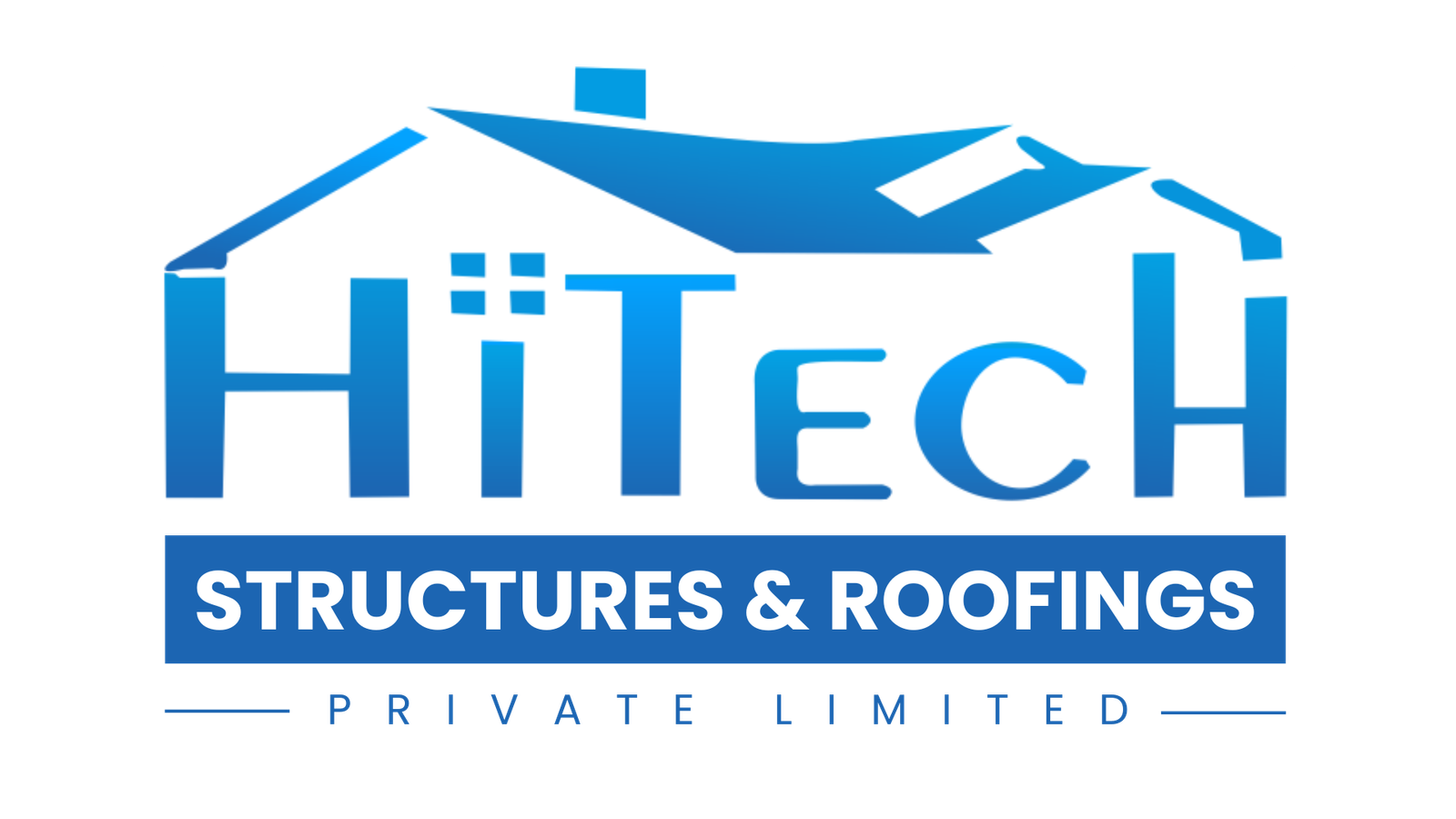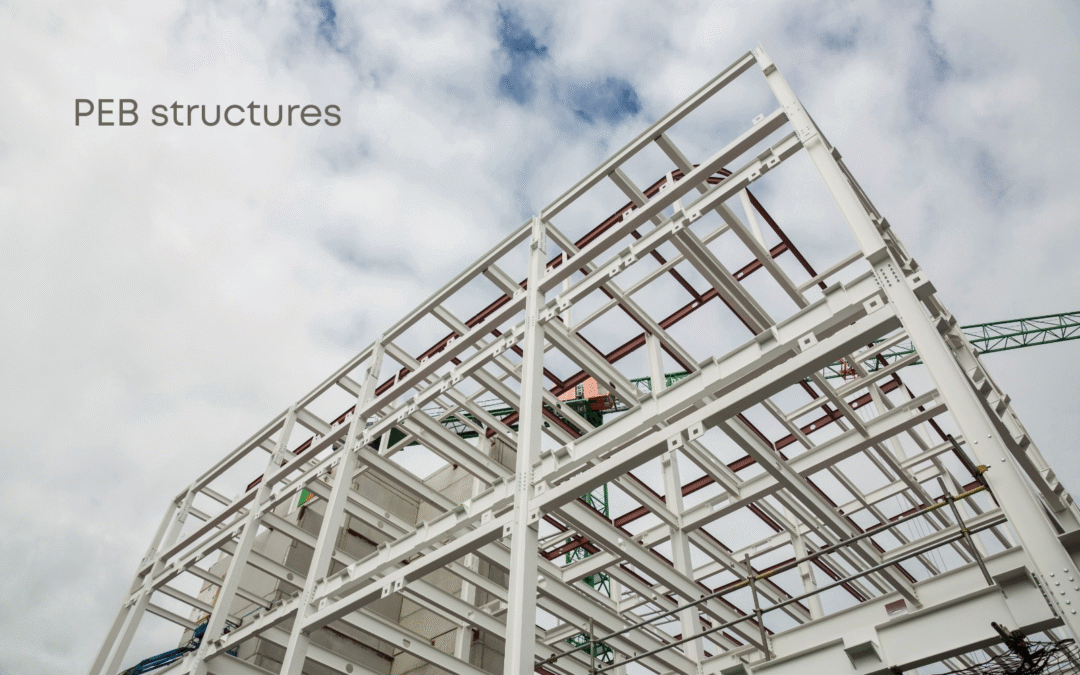In a country like India, which is experiencing record growth in infrastructure development, the demand for better, more economical, and more sustainable construction solutions has never been greater. To that end, we see pre-engineered buildings, or smart construction PEBs, which are at the forefront in the industrial, commercial, and even semi-residential segments.
Welcome to the age of smart construction with PEBs, which is that of innovation and efficiency, and where steel is beyond being a material; it is a base for the structures of tomorrow.
What Are Pre-Engineered Buildings?
A pre-engineered building is a steel structure that follows a structural design of primary, secondary, and cladding members.In a factory setting, all components are fabricated and then taken to the site for easy assembly and smart construction of PEBs.
Unlike what we see in traditional buildings, which take months of on-site labour and unpredictable timelines, PEBs are designed in advance, fabricated with precision, and put up in a fraction of the time. We do not see a trade-off in terms of strength or flexibility, knowmore
Why PEBs make sense for India for smart construction.
1. Speed of Construction
Time is money in the construction business. PEBs are manufactured off-site and then put together quickly on-site with bolted connections. This process, which in turn reduces construction time by 40 to 60 per cent as compared to what we do now.
2. Cost-Effectiveness
With improved material use, decreased labour needs, and quick project turnaround, PEBs tend to be more affordable over the project’s life span. Also, we see less material waste, reduced site disturbance, and very low maintenance costs in the run of things.
3. Scalability and Flexibility
PEBs are very flexible and scalable. Got plans to expand your factory or warehouse in the future? The modular design of PEBs allows you to easily add sections or reconfigure layouts without tearing down the whole structure.
4. Sustainability and Environmental Impact
As the global shift goes towards green and energy-efficient buildings, PEBs are reported to be at the forefront. We see in the options of solar panels, insulated wall panels, rainwater collection, and natural ventilation that these buildings are putting out less carbon and improving energy efficiency.
In Which Industries Are PEBs used in India for smart constructions?
PEBs are out of the industrial shed and temporary structure era. What we are seeing is that they are performing well.
– Industrial Manufacturing Units
– Logistics and Warehousing
– Automotive Plants and Workshops
– Cold Storage and Agro Facilities
– Educational and Institutional Buildings
– Retail Showrooms and Commercial Complexes
– Aviation (Hangars and Airports)
– Sports Arenas and Exhibition Halls
Smart Features in Modern PEBs
PEBs today have advanced well beyond simple steel frames. In the realm of smart design integrations, they are at the forefront of what is to come in smart construction of PEBs.
Building Information Modelling (BIM).
Helps out in the resolution of design issues, improves the cooperation between architecture and MEP services, and also, in turn, improves project visualization.
1. Smart Ventilation and Insulation
Improved air flow and thermal insulation, which in turn reduces the use of artificial cooling and heating and in effect lowers energy costs.
2. Fire-Resistant Materials
We use advanced coatings and inorganic materials in PEBs, which also pass fire safety regulations.
3. Solar-Ready Roofs
Many PEBs today feature rooftop designs that support solar panel installation and energy self-sufficiency.
Challenges and Misconceptions
Although PEBs have many benefits, they still face some issues in India:.
– Perception of Limited Aesthetics
Some developers think of PEBs as very much in an industrial style, which is not always attractive. But we have modern cladding, glazing, and façade options that present very impressively.
– Initial Cost Misunderstanding
While the initial outlay for PEBs may look a little higher than that of traditional options, the full lifetime cost is, in fact, much lower, as we see in that they come in faster and require less maintenance.
– Lack of Skilled Installers
Erecting PEBs requires trained staff. Also, it is great to report that many companies today are providing full-scale solutions, which include design, supply, and erection.
PEBS and the issue of the direction of Indian construction out to 2035.
In India in 2030, we see the infrastructure sector grow to USD 1.4 trillion, according to the industry forecast. In this aspirational environment, PEPs fit in perfectly with national targets, which also bring to the table speed, sustainability, and scale.
As of now, with the expansion of industrial parks, smart city projects, and logistics hubs, the demand for modern, efficient, and green infrastructure is only set to grow. PEBs are also at an advantage in this regard, which we also see to present long-term benefits to private developers and public sector projects.
Final Thoughts
Smart construction is out to prove that it is not just about tech use; it is about what we may term as building better, faster, and more responsibly. Pre-engineered buildings do that. With benefits that include quick delivery, cost efficiency, green compliance, and design flexibility, PEBs are also at the forefront of what we see as the future of steel construction in India.
As you design a new warehouse, manufacturing unit, or commercial complex, PEBs present a forward-thinking solution that is at the same time innovative and practical.

